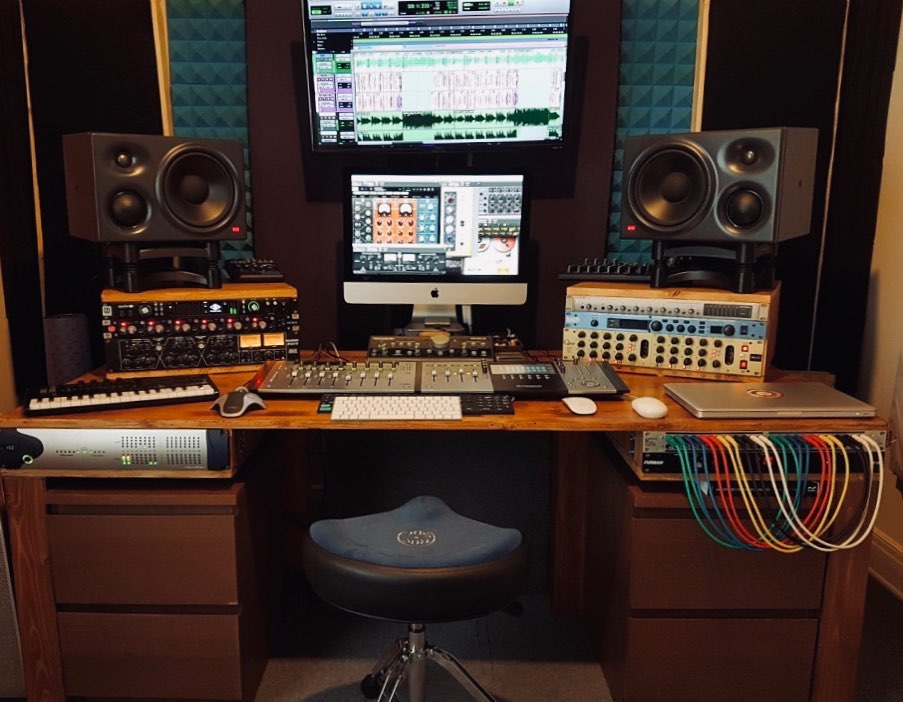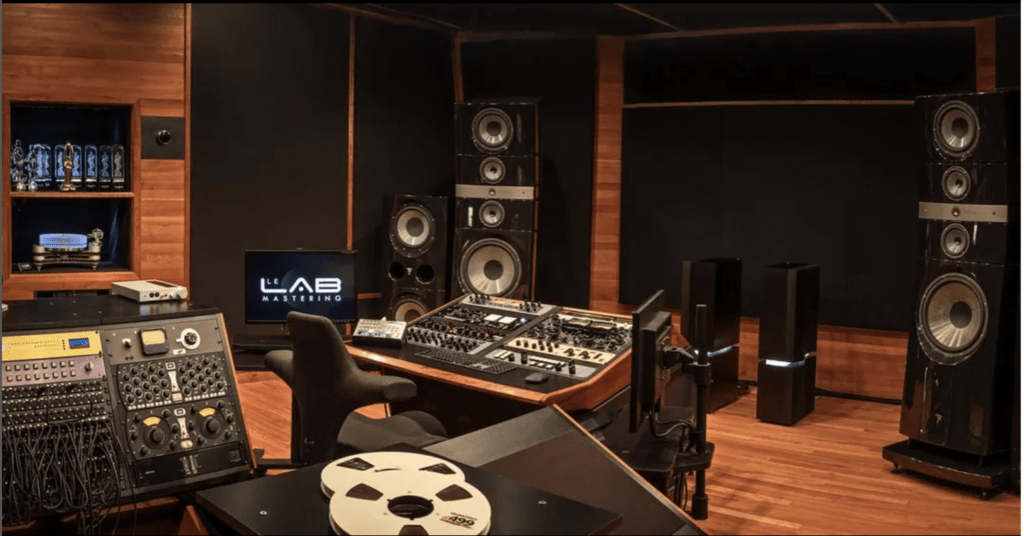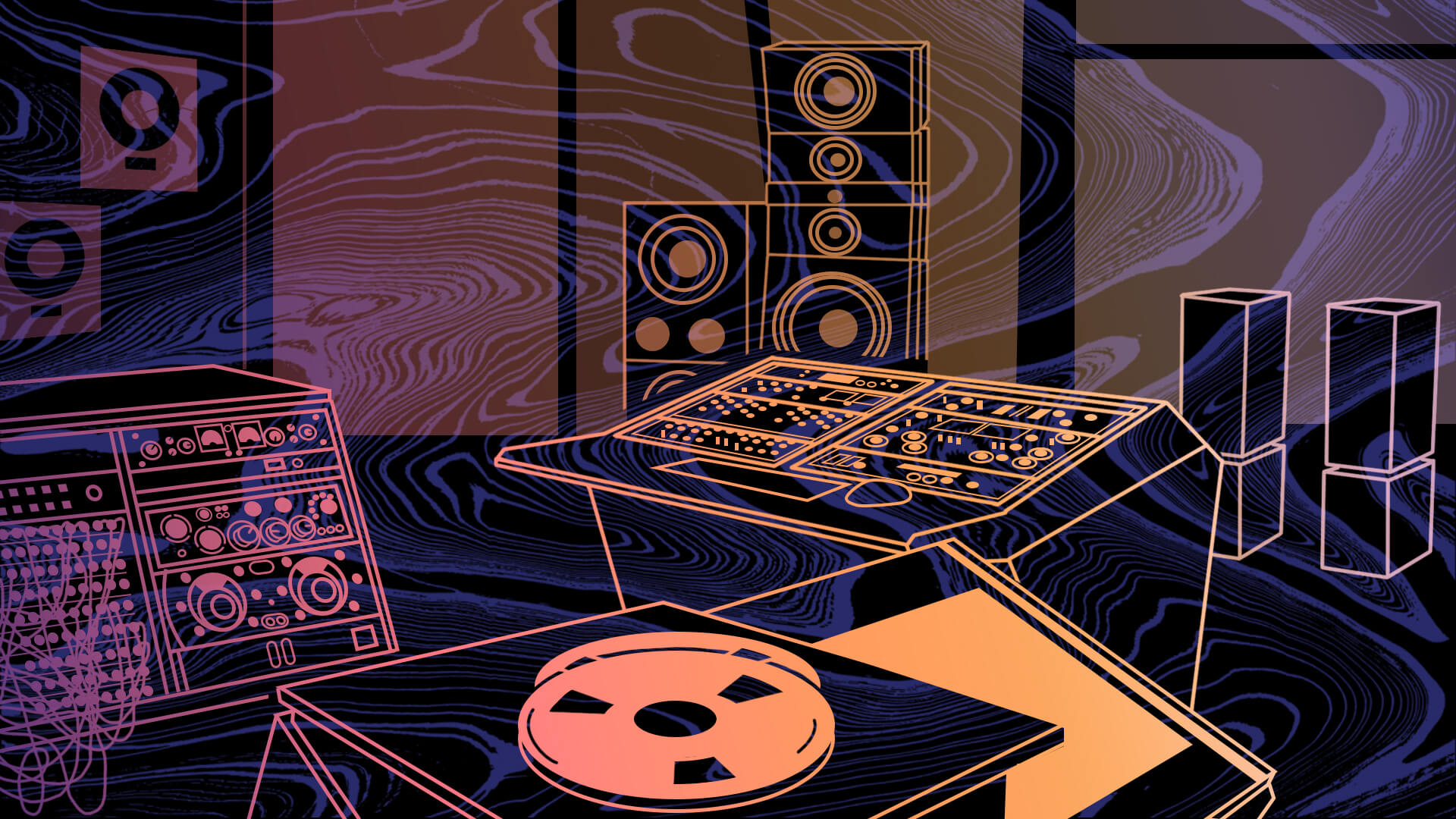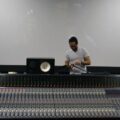While there may be some confusion about the difference between mixing and mastering, it’s actually fairly easy to define and distinguish the two. Although both share tools and similar techniques, mastering is the process of creating an original – or master – copy of a track or digital audio file from which all other duplicates will be generated in the production process. For example, if an artist releases an album, a master CD (which would be referred to, naturally, as “The Master”) would be used to make the copies that will eventually be sent out for distribution. This same process is applied for producing vinyls and cassette tapes, as well as for digital files.

The Difference Between Mixing & Mastering
Mixing, as explained in our Introductory Mixing Q & A article, is all about bringing balance and coherence to all the tracks recorded in a project by mixing them down into a single stereo track. This means that if you’re working on a song, each of the recorded elements like the guitar, vocals, drums, and bass not only have to be heard clearly, they also have to sound great together. Whatever the instrument, the goal is to try to get each one to sound just right in the mix, which is achieved when the audio engineer focuses on the individual musicians in a particular song.
Mastering, on the other hand, occurs later in the process. This is when the engineer looks at the big picture and makes adjustments to the overall tone of a project, as opposed to its individual elements. Of course, how each instrument fits in the mix as a whole is still important, but the main goal isn’t to make changes to or remix the tracks; it’s to ensure that a single track sounds consistent with and compliments a larger body of work (i.e., a whole album). Mastering engineers must also make sure that the quality of the sound will stay the same regardless of the playback system being used to broadcast the audio (e.g.: your smartphone, car speakers, a club’s sound system), which further illustrates the level of skill necessary for mastering, as the quality of a track is ultimately dependent on the last engineer who heard it.
You can read a more in-depth description about the different audio engineer duties in our Career Opportunities as a Sound Engineer article.

The Origins of Mastering
One of the first commercially available mediums used for releasing music was vinyl, which had a distribution process that involved physically cutting a slab of vinyl with a lathe. Ensuring the cutting process was done correctly required an enormous amount of skill, as even the slightest mistake in cutting the master could result in the needle sliding out of the grooves during playback on thousands of records.
Over time the cassette tape and then the compact disc became popular formats, both of which were much easier mediums to master since signal loss was minimal. Things have changed significantly in the past twenty years however; these days, after a song is mixed, it often goes through a “pre-mastering” phase that involves a lot more than simply adjusting the overall sound to suit the medium it’s being mastered for.
Pre-Mastering & Remastering
Since the days of cutting vinyl, mastering engineers have had the opportunity to play with sound, experimenting with things like equalization and taking advantage of new technology that allows them to “sweeten” a mix and significantly change its tone. This is called pre-mastering, and is often done at the same time as the mastering of the track.
Depending on the project and the engineer, the pre-mastering process can be as simple as adding compression or adjusting a song’s highs and lows, or it can be incredibly in-depth, with the engineer working on a single song for several days in pursuit of the specific vibe or tone. So, what was once a simple process that any competent audio technician could perform has now evolved into an entire industry of highly experienced engineers who are solely responsible for the mastering and pre-mastering segments of a recording session.
There is also the process of “remastering,” where an engineer accesses the original stereo output of a previously released album and masters the tracks from scratch. Grammy winner Bob Ludwig has long been considered one of the best in the business, and his remastered versions of The Rolling Stones’ back catalogue are an excellent example of how effective the process can be.

Mastering for Digital Output
In today’s streaming era, it’s very common for a record to be released exclusively via a digital medium. Hiring a professional mastering engineer can go a long way in giving your work a cleaner sound, but it’s also something you can do yourself should you have limited resources. If you’re planning on mastering and pre-mastering your own tracks, here are a few general tips to get you started:
1. Match your levels (A/B listening): Always listen to your original mix at a level that is matched with your master version. When listening to the “before” and “after” tracks, make sure you’re comparing them with the volume level matched. You want to make sure that you are making the track better, not just louder.
2. Have good reference tracks: To make a mastering session successful, it’s important to have good reference material like other records that have a sound you’d like to achieve. Continuously comparing your mixes with reference tracks throughout your mastering process is an excellent way to keep your artistic perspective in check, as it prevents you from having a random blasting guitar that doesn’t match the rest of the work just because you figured a certain EQ sounded good at the time.
3. Make sure to meter your master properly: When mixing, peak level in “dB’s” (decibels) is the primary way to measure the loudness of a track. When it comes to mastering, however, this is not an efficient way to meter for various reasons, one being that peak level does not take into account how a human’s ear receives and interprets loudness. Utilising the Loudness Units Full Scale, or “LUFS”, algorithm is helpful in this case, as it determines a song’s perceived loudness by analysing its average volume over time, while also compensating for a host of variables such as some frequencies that the human ear is more sensitive to. LUFS allows engineers to obtain a consistent perceived volume among all the tracks, regardless of their peak levels.
4. Get a fresh perspective: The mixing process is exhausting for the ears, so it’s important to step away from the tracks for days or even weeks before beginning the mastering process.
5. Listen on different devices: Before deciding on your “final” master, output a few test masters and listen to them on speakers you’re familiar with (your car stereo or favourite headphones are perfect for this). How does your track compare with songs you’ve heard a hundred times on those same speakers? You can also get advice from others, but ultimately this is your master, so trust your instincts!
Written by Fayez Saidawi
Illustration by Yihong Guo




















